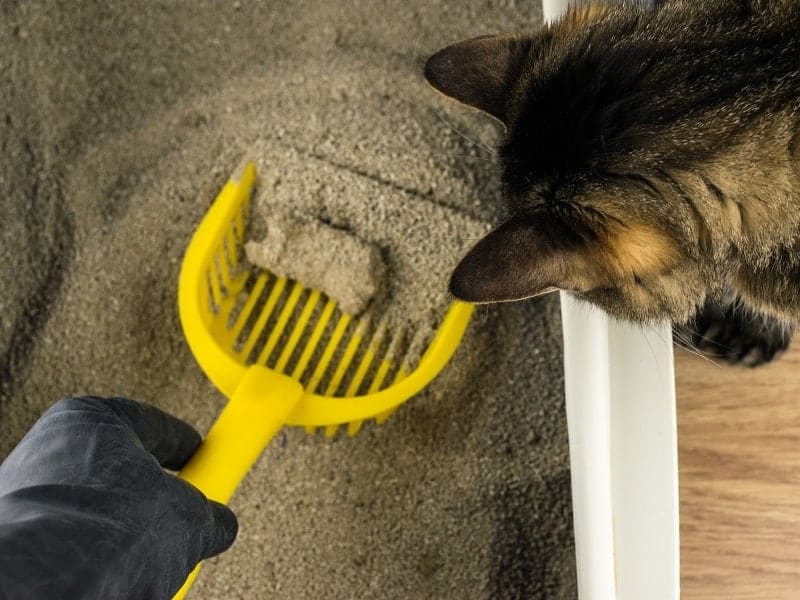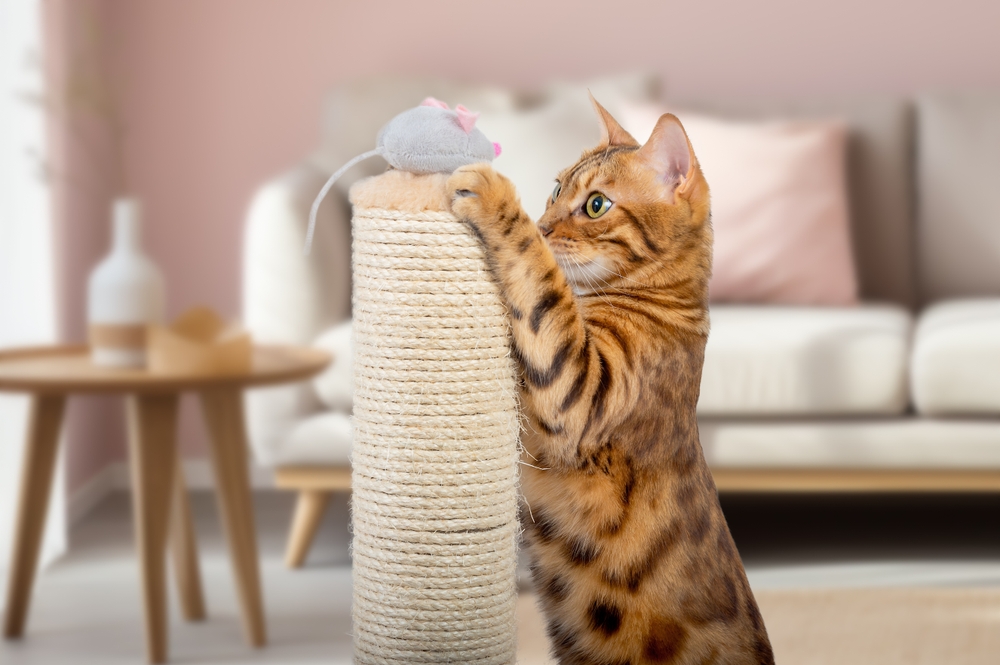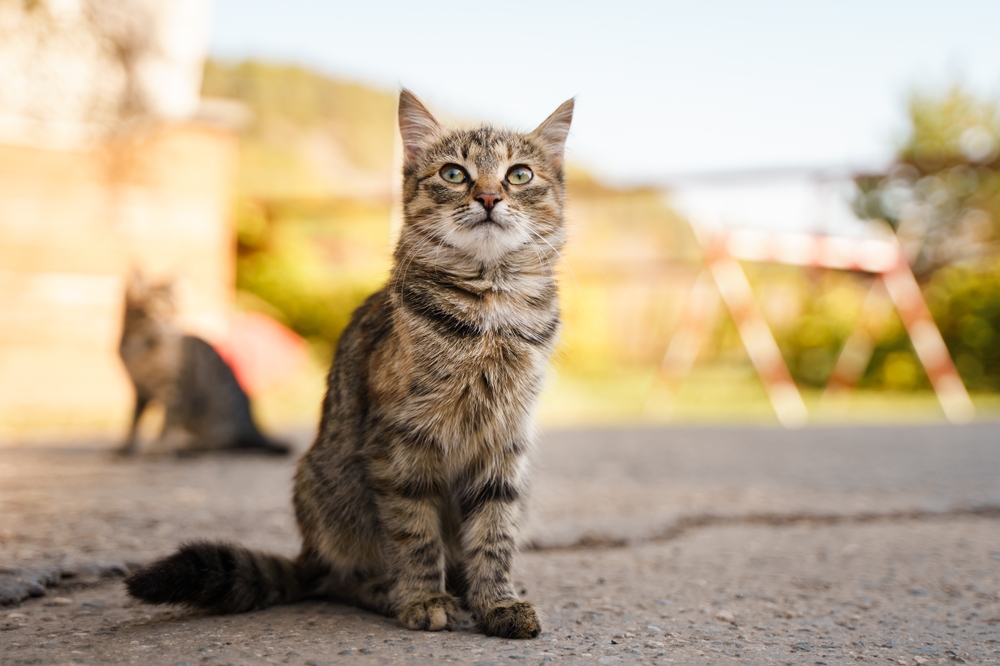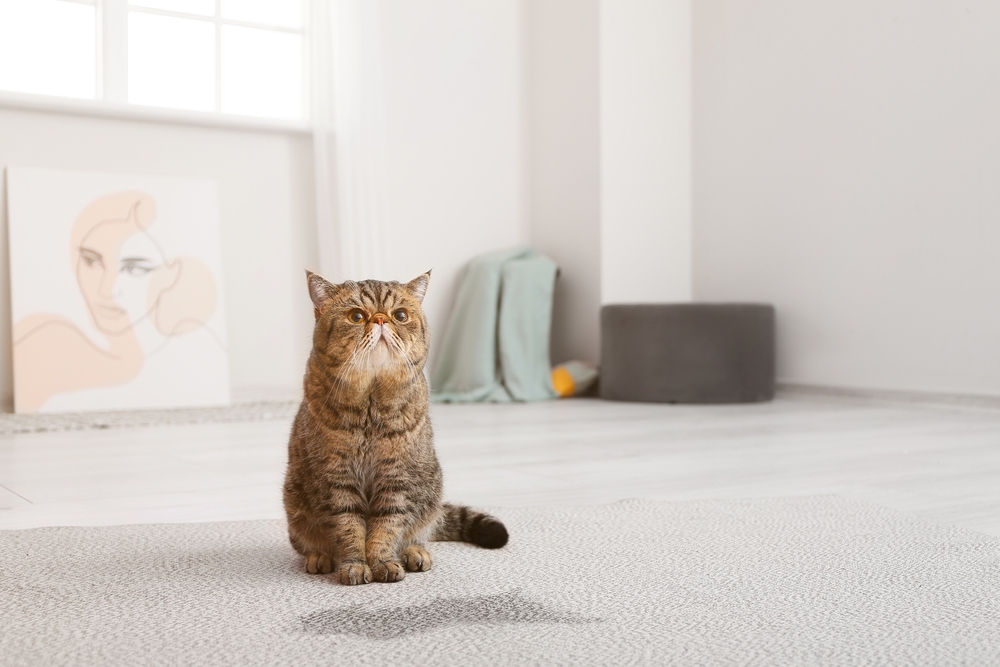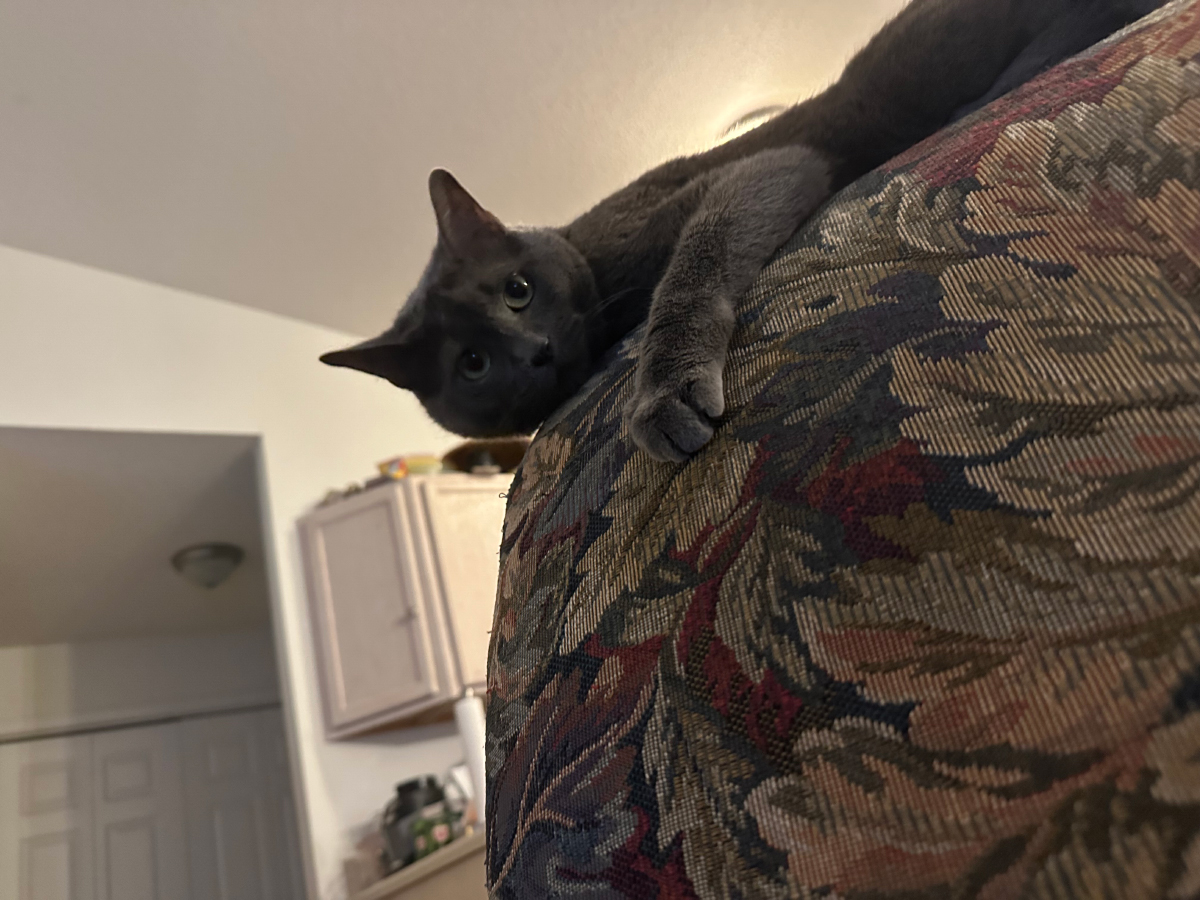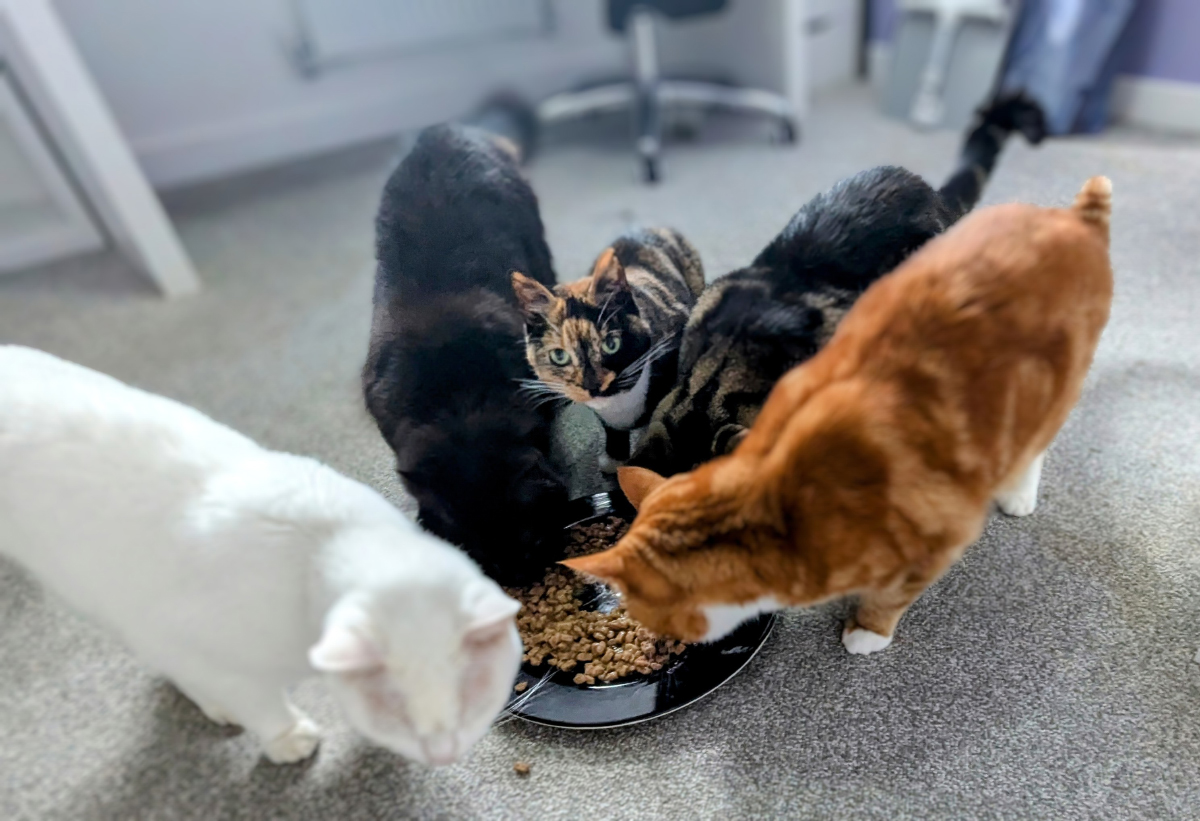Dealing with your cat’s litter is probably one of the least pleasant elements of having a feline companion. If you live in an apartment and keep your cat’s litter box in your bathroom, you might wonder if you can just flush your buddy’s litter down the toilet when it’s time to change it.
It would, after all, make your life just a bit easier. Unfortunately, flushing cat litter down the toilet is not recommended since it can cause problems with your home’s sewer lines and the plumbing.

What Will Happen if I Flush Litter?
Flushing cat litter, particularly the type that contains clay, eventually results in clogged sewers and ruined plumbing. Clay litter can absorb up to 15 times its weight in liquid, and it expands as it does so, resulting in a growing mass that becomes super heavy and blocks the sewer.
Blocked sewers aren’t just a problem for your household; they can impact entire streets and neighborhoods. When flushed, the litter can cause serious problems in large-scale sewers designed to handle massive volumes of waste; imagine what kitty litter can do to the pipes in your house.
Most waste authorities and plumbers suggest that the only things that should be flushed down the toilet are human urine, feces, and toilet paper.
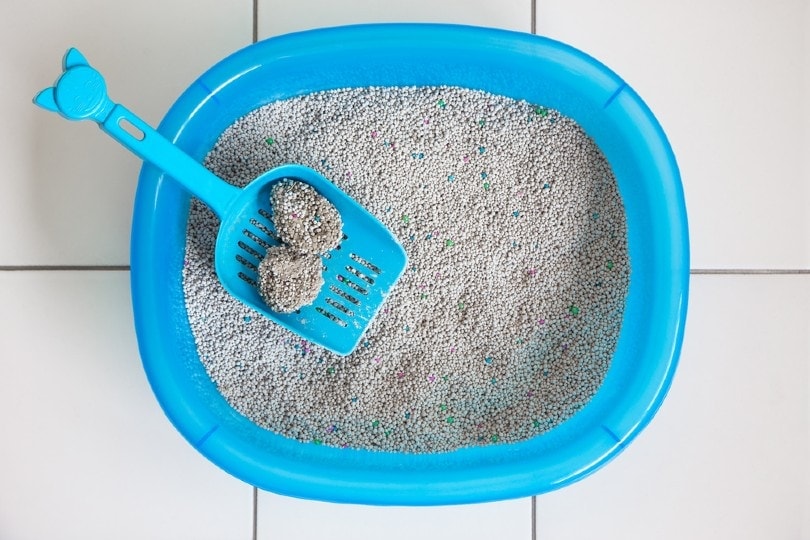
Can I Flush Cat Waste?
It’s not a good idea. If you’re using a clumping litter, it’s simply not appropriate to flush your cat’s waste down the toilet since it will be encased in clay. That’s the point of clumping litter; it’s designed to wick up moisture and lock your cat’s urine away. That quality makes even a small amount of litter dangerous for household plumbing and sewer lines.
If you’re using non-clumping crystals, on the other hand, you won’t be able to scoop out nice clumps of urine. With crystals, it’s virtually impossible to tell where your cat has peed. Most non-clumping options are highly absorbent, even if they aren’t quite as effective when absorbing liquid as clay-based litter. So, there’s no safe way to flush non-clumping litter either. When it’s time to change your cat’s litter, you’ll need to bag it up and throw it in the trash.
If you’ve managed to train your cat to use the toilet, flushing your feline buddy’s waste won’t clog up your home’s plumbing or the local sewers, but it may introduce harmful pathogens into the wastewater. Australian water authorities generally frown upon flushing cat waste, but there are some exceptions. The United States Environmental Protection Agency (EPA) states that pet waste can “harm fish and wildlife populations, kill native vegetation, foul drinking water, and make recreational areas unsafe and unpleasant.”
Parasites in the cat waste you flush down the toilet can infect humans and other animals through the water supply. The problem is that most water waste treatment facilities aren’t set up to address the bacteria, viruses, and parasites commonly found in cat poop and pee, including Toxoplasma gondii, which is shed in cat feces.
The parasite can cause serious illness in people with weakened immune systems. It can also cause pregnant women to miscarry, and exposure during pregnancy can interfere with fetal development and result in serious issues such as fetal brain damage. It can also hurt marine wildlife.
What About Flushable Litter?
There are a few types of litter that are advertised as flushable. Most are made with biodegradable materials such as corn, soy, pine shavings, paper, grass seeds, or tofu. Unfortunately, it’s still not okay to flush the materials down the toilet.
They can cause clogs, particularly if you have a septic system. If you have a water-saving toilet, it might not even produce enough water per flush to move the litter along safely. You’re still introducing cat feces directly into the water supply, making it a less-than-ideal option.
Then What’s the Point of Flushable Litter?
Flushable litter is a great choice if you’re looking for a more environmentally friendly cat litter. Clay and silica-based cat litter don’t biodegrade and end up adding to the mess in landfills. Flushable litters are usually biodegradable, making them a much better environmental choice.
How Should I Responsibly Dispose of Cat Litter?
Use a biodegradable bag and throw the waste into the trash. If you use biodegradable litter, it’s theoretically possible to compost the bits that haven’t been peed or pooped on. However, you’ll need to be sure there’s no cat waste on the litter you’re throwing into your compost heap, which may be more trouble than it’s worth. You won’t be able to use any compost with kitty litter for plants you plan to consume, like herbs and vegetables.
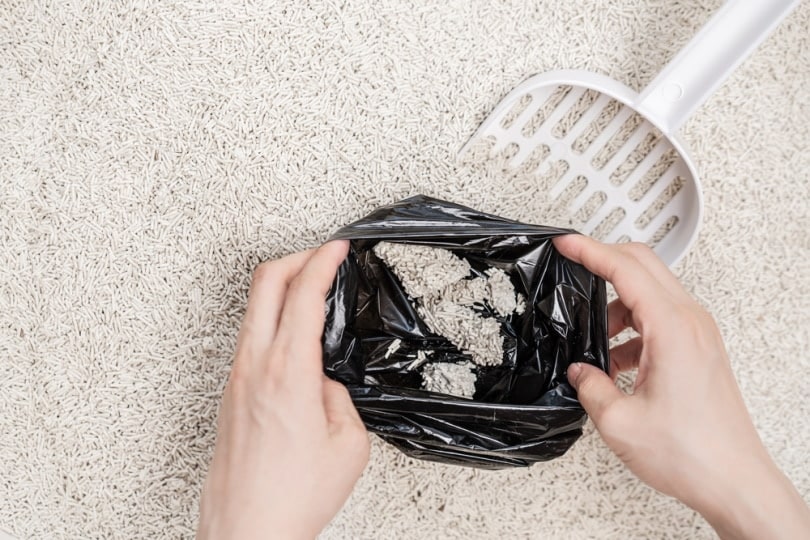
Final Thoughts
While it would be wonderful to flush away your cat’s dirty litter, it’s not a good idea for your plumbing, your area’s sewers, or the local water supply. Because cat waste contains bacteria, viruses, and parasites that water treatment facilities don’t treat, flushing cat waste down the toilet can seriously impact the health of your neighbors and wild critters that come into contact with parasites such as Toxoplasma gondii. So, be good to your plumbing, community, and environment by disposing of your cat’s waste the old-fashioned way—bag it and throw it in the trash!
Featured Image Credit: gaikova, Shutterstock

